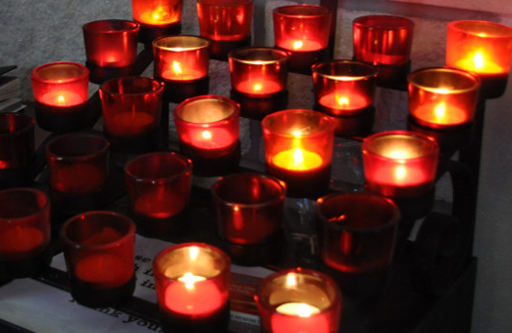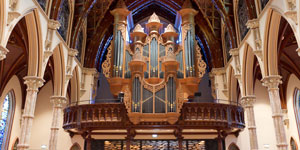Evangelization
What is Evangelization? How does it involve me as a Catholic?
For Catholics, the term evangelization conjures various connotations: door-to-door missionaries, tent revivals, pushing one’s faith tradition, judgment, and many perceptions that are more negative.
The United States Conference of Catholic Bishop offers an explanation rooted on a Catholic perspective of the concept:
Evangelization, then, has both an inward and an outward direction. Inwardly it calls for our continued receiving of the Gospel of Jesus Christ, our ongoing conversion both individually and as Church. It nurtures us, makes us grow, and renews us in holiness as God’s people. Outwardly evangelization addresses those who have not heard the Gospel or who, having heard it, have stopped practicing their faith, and those who seek the fullness of faith. It calls us to work for full communion among all who confess Jesus but do not yet realize the unity for which Christ prayed. Pope John Paul Il, in his encyclical on missionary activity, summed up the three objectives of mission: to proclaim the Gospel to all people; to help bring about the reconversion of those who have received the Gospel but live it only nominally; and to deepen the Gospel in the lives of believers. What is Evangelization #23
As Catholics, we tend to push the responsibility of evangelization upon the clergy or lay directors. There tends to be a feeling of inadequacy to talk about our faith. These tendencies may stem from the reality that we, as Catholics, do not talk about our faith journey.
When interviewing adults seeking to become Catholic, I am amazed how inquirers are affected by Catholics in their lives. After some prodding, these Catholics share how faith impacts their daily interactions, decisions, and behaviors. Despite our apprehension, Catholics are capable of evangelizing; just in a manner that we are unaware.
Art of Accompaniment
Pope Francis proposes that we accompany those seeking God as opposed to pushing or pulling them to the Gospel.
In the papal exhortation, Evangelii Gaudium (Joy of the Gospel), Pope Francis encourages “the art of listening, which is more than simply hearing,” as the best way to show our respectful and compassionate presence on the journey (no. 171). By listening, we acknowledge the unique relationship each person has with God. We cannot perceive what we do not know. In gaining the trust of the other, we can correct others by recognizing and helping them to realize “the objective evil of their actions, but without making judgments about their responsibility and culpability” (no. 172). Through listening, prudence, and our own experience, we will come to learn the best ways in each situation to gain trust and encourage growth
Accompaniment in Action
As part of the Vision 2025: The Strategic Plan of Holy Name Cathedral, the Evangelization Pillar was formed from the former Faith Formation Commission. The Evangelization Pillar Action Committee (EPAC) created its new mission statement:
Accompany those who yearn to belong and empower those who belong to become missionary disciples.
Ministries under the auspices of Evangelization are rooted in accompaniment. Emerging leaders learn:
- Listen without judgement
- Listen attentively without pre judgement
- Listen as a prayer
- Repeat what is heard, for clarification
- Walk in the sandals of the other, understanding the unique relationship with God.
- Gently share possible guidance to consider.
- Respect that each person is on a personal journey. We accompany, knowing that certain decisions are not our responsibilities.
- Reflect how other journey enrich our own journey.
- Pray, give thanks, seek consolation, ask forgiveness, knowing that God loves us unconditionally.
Salon at Holy Name Cathedral Continues: However, as The Catechism of the Catholic Church clearly states [239]: “God transcends the human distinction between the sexes. He is neither man nor woman: he is God.” This assertion raises more questions than answers. In what way can we say women in their femininity reveal the face of God and how might we come to know God better by seeing his reflection in women? Please join theologian K.T. Brizek as she helps us explore how womanhood presents the image of God. No advance registration is needed. We meet in the Rectory. Saturday, July 29, 2023, 2:00pm to 4:00pm In the 18th and 19th centuries, philosophy, science, and art revolutions took Europe by storm. The Enlightenment was marching forward and large groups of regular people were interested in the new developments. Gatherings called Salons opened in bars and homes where experts and artisans were connected with everyday folks to discuss the issues of their time. Holy Name Cathedral will present its twist on this tradition. Join us at our own Salon, as we explore the new and fascinating ways Catholicism is continuing to contribute to the human endeavor, and bring about the greater glory of God. This series is hosted by James Keene from Holy Name Cathedral’s Evangelization group. In July, Joe Malham, visual artist and iconographer will speak about “Unorthodox Iconographers: Artistic Individualism Speaker— Kevin Kadowaki, Ph.D. philosopher— Mellon Post-Doctoral Fellow in Modeling Interdisciplinary Inquiry at Washington University in St. Louis; Ph.D. University of California Irvine, Philosophy of Physics Title— As Below, So Above? Catholicism after the Scientific Revolution Description— Since the birth of the field in the seventeenth century, the relationship between physics and the Catholic Church has often been contentious and confused. However, as both of these institutions developed, their rivalry became less clear, and seemingly contradictory positions between them have, in more recent times, been examined with increasing scrutiny. Kevin Kadowaki, with his newly minted Ph.D. in the philosophy of physics, will explain the ways these two outlooks on the cosmos interact, and— surprisingly— how they most often do not. Future sessions include Joe Malham, visual artist, iconographer, and aesthete; speaking on Unorthodox Iconographers on July 29 and David Keene, Ph.D., J.C.L. anthropologist and Chancellor of the Archdiocese of Chicago, speaking on In Service of the Living: the Recovery of Human Remains for the Canonization of Saints on August 26. All sessions begin at 2:00pm.
Woman as the Image of God
Saturday, January 27 at 2:00pm The portrayals of God in the Catholic tradition typically envision God as a man: Father, bridegroom, priest. We know from Scripture that men and women are both made in the image of God, but when pressed on differences between the sexes, many will say that men are the image of Christ, and women are the image of the Church, not God Himself.
The portrayals of God in the Catholic tradition typically envision God as a man: Father, bridegroom, priest. We know from Scripture that men and women are both made in the image of God, but when pressed on differences between the sexes, many will say that men are the image of Christ, and women are the image of the Church, not God Himself.
in the Wider Faith Community.” The life of the artist is well known to be peculiar, encompassing demands that most people find unusual in the pursuit of craft and creativity. Catholic artists especially find themselves confronted with not only the burdens of producing meaningful works, but June 24 from 2:00pm to 4:00pm in the Rectory
June 24 from 2:00pm to 4:00pm in the Rectory
Chicago Catholic Heroes Chicago is a city that celebrates a rich and diverse history of peoples of faith. The city represents all of the religions of the world and all have their own legacy of faith, service and outreach to the people of the city. Roman Catholics have been in Chicago since the expeditions of Louis Joliet and Father Marquette in the 17th Century, through city founder Jean Baptiste Du Sable and the ministries of Father Augustus Tolton and Mother Theresa Dudzik to the champions of labor and the marginalized like Mother Jones and Dorothy Day. Although one may not have the heroic sanctity of the other and one may not have been a high profile name while the other is less known, all have the common bond of their Catholic faith, rooted in the Gospel and lived for the other in charity and service. Chicago’s Catholic Heroes is an unexhausted collection, 16 presented in this gallery, of the Catholic presence in historic and contemporary Chicago. You can view the series on the second floor of the Holy Name Cathedral, donated by an anonymous donor. Joseph Malham, artist and writer, is the mastermind of this unique local series.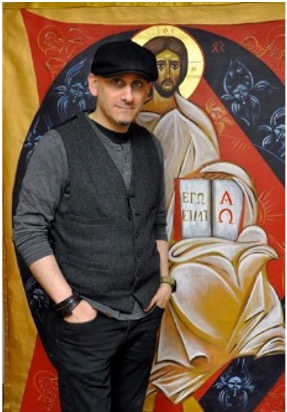
Icon Painting Workshop Holy Name Cathedral Lent, 2024 The workshop would begin Friday night at 7:00 pm and run until approximately 9:00 pm. The Saturday session would run from 10:00 a.m. until 4:00 p.m. This would allow people to go to the evening anticipated Mass. The Sunday session would run from 10:00 a.m. – 4:00 p.m. The instructor will not be available for private instruction after the end of the workshop. A minimum of eight (8) participants and a maximum of ten (10) would be needed for the workshop. As Joe is the solo This is a silent retreat, a prayerful journey to reveal the face of Christ. No previous artistic experience is required or desired. Joe will guide the attendees, step by step, through the journey. The cost for each attendee is $175.00, which covers materials, gold leaf, the icon board and instruction for the three days. Payment in full for each attendee is required four weeks before actual date at the time of reservations. As all materials would need to be ordered before the workshop, no money is refundable if the attendee cancels or is unable to participate. If an attendee cancels due to illness, family or work emergencies, a voucher for a future workshop will be issued. Click here to register online. ![]() Iconographer Joe Malham would come to Holy Name to hold a three consecutive day icon workshop in the Lent Season of 2024, from the Friday before Palm Sunday through Palm Sunday.
Iconographer Joe Malham would come to Holy Name to hold a three consecutive day icon workshop in the Lent Season of 2024, from the Friday before Palm Sunday through Palm Sunday.
instructor any more than ten would lessen personal attention and instruction for the attendees.![]() The attendee keeps the final icon. A final RSVP would be necessary four weeks before the actual date for materials to be ordered. Attendees would need to provide their own lunch on Saturday and Sunday.
The attendee keeps the final icon. A final RSVP would be necessary four weeks before the actual date for materials to be ordered. Attendees would need to provide their own lunch on Saturday and Sunday.![]() Friday evening begins with Evening Prayer and Saturday and Sunday with Morning Prayer. It is requested that attendees arrive on time or shortly before.
Friday evening begins with Evening Prayer and Saturday and Sunday with Morning Prayer. It is requested that attendees arrive on time or shortly before.
NO GREATER LOVE: Lenten Faith Sharing Small Communities Would you like to gather once a week during Lent to share God’s Word together and deepen your relationship with Jesus? Our No Greater Love Lenten Faith Sharing Small Communities meet: Staff personnel facilitate on-site gatherings. Short training sessions are available for those who wish to facilitate a small community in their homes. Questions? Contact Sr. Katie Mitchell, kmitchell@holynamecathedral.org or Dr. Ken Ortega, kortega@holynamecathedral.org
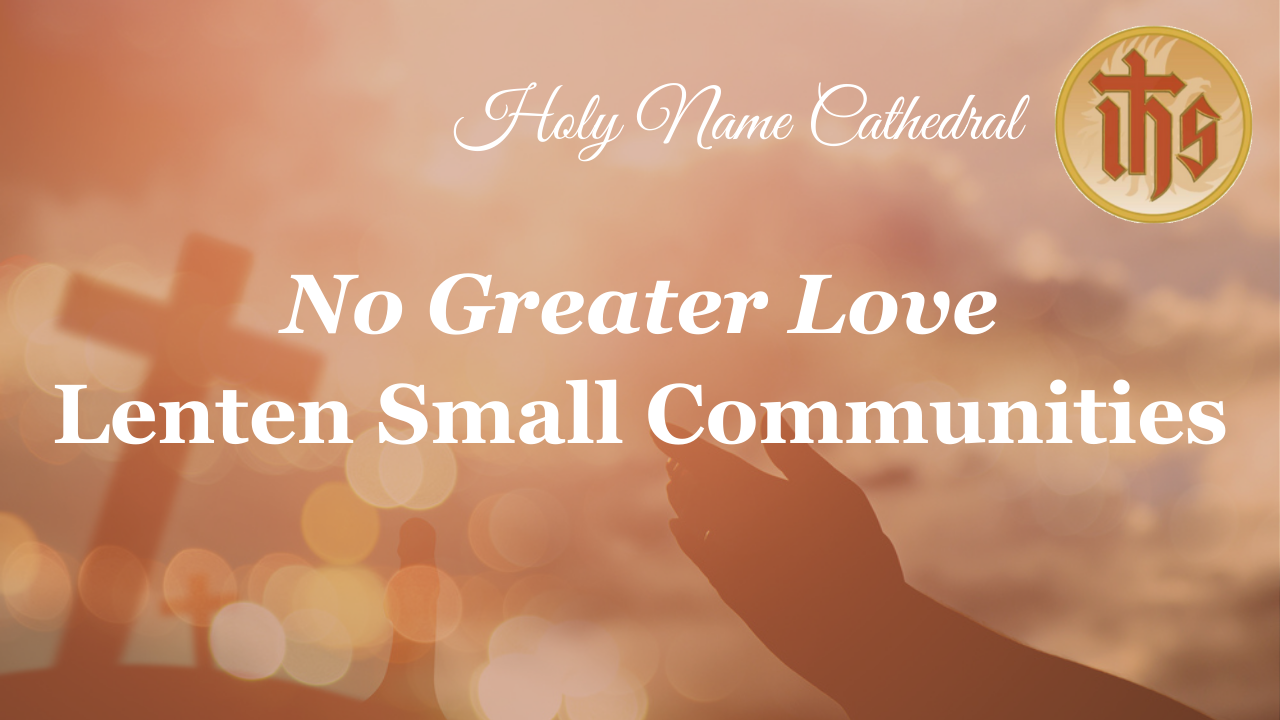 We will use the scripture readings from the upcoming Sunday Mass to reflect and discern how God is speaking through them. These Lenten Faith Sharing Communities will also build a greater sense of community, belonging, and strengthen our faith community. These encounters with God’s Word will also challenge us to follow God’s way more closely in daily life and make a difference in our world.
We will use the scripture readings from the upcoming Sunday Mass to reflect and discern how God is speaking through them. These Lenten Faith Sharing Communities will also build a greater sense of community, belonging, and strengthen our faith community. These encounters with God’s Word will also challenge us to follow God’s way more closely in daily life and make a difference in our world.
“Before I formed you in the womb, I knew you.” Jer. 1:5 Miscarriage and Stillborn The Celebrate Life Initiative is forming a team to help parishioners, friends, and those experiencing the effects of the loss of a child. Please contact Dr. Ken Ortega, kortega@holynamecathedral.org, who can put you in contact with the team.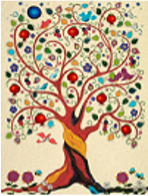 The joy of a new life is shattered when a full-term birth is cut short. Such loss defies words and reaction by society. The tendency to move on tends to dominate our society. We do not address the emptiness felt by the mother who has already formed a relationship with this living person within her. There is the father whose dreams evaporate while trying to console his wife. There may be children coping with the reality that now, there is no sibling.
The joy of a new life is shattered when a full-term birth is cut short. Such loss defies words and reaction by society. The tendency to move on tends to dominate our society. We do not address the emptiness felt by the mother who has already formed a relationship with this living person within her. There is the father whose dreams evaporate while trying to console his wife. There may be children coping with the reality that now, there is no sibling.
Entering the Interior Castle – A Journey into the Depths of the Souls This journey focuses on intense reflection, rooted in silence and personal journaling. The cohort meets in the Holy Name Cathedral rectory, 6:45- 8 p.m., on the following Wednesday Evenings: February 21 March 6, 20, April 3, 17 May 1, 15, 29 There is no charge, yet participation is limited, assuring personal attention. It is also important that you plan to attend the entire series, learning the tools for onward spiritual exploration. Dr. Kenneth Ortega, Director of Evangelization, facilitates the process.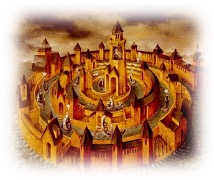 St. Teresa of Avila invites us to journey into the depths of our souls, using the paradigm of a castle. This eight-session experience focuses on the first of seven mansions, which comprise the castle.
St. Teresa of Avila invites us to journey into the depths of our souls, using the paradigm of a castle. This eight-session experience focuses on the first of seven mansions, which comprise the castle.
Camino del Santo Nombre Finding sacredness in the ordinary allows us to encounter God in our daily journeys. In 2022, Bob Larson trekked the Camino de Santiago, in Spain. Camino derived from the Spanish verb Caminar (to walk) is a walk, a trail, a pilgrimage often associated with The Way of Jesus. The 500 miles journey allowed Bob to encounter God in the wilderness, fellow sojourners, Spaniards, and alone. The pilgrimage led Bob to Holy Name Cathedral, where he entered into full communion of the Catholic Church. Inspired by this experience, we now provide Caminos, small pilgrimages, throughout Chicago. We gather a small group to explore the ordinary places and things, and give them a religious interpretation. Suddenly, the profane becomes sacred. Each person receives a Holy Name shell, resounding the shell of Santiago, a stone, and a booklet to reflection. We gladly lead the caminos. We also provide resources so that you can lead a group or travel alone on these small pilgrimages. Camino de los meurtos – November 18 Camino de los muertos (a walk to share memories of our departed) occurred Saturday, November 18, at Graceland Cemetery, 4001 North Clark. In the spirit of All Saints/All Souls celebrations, we shared the lives of dear loved ones and even offered personal tribute at the graves of notable Chicagoans. Camino a la navidad occurred November 16, at the Art Institute of Chicago. Reflection on religious and secular art pieces allowed each pilgrim to find meaning on this journey to the Nativity. See below for the details. Camino de Pasqua occurs February 29 at the Art Institute. Consult the bulletin for more information. Camino de los animales occurs March 23 at the Lincoln Park Zoo. Consult the bulletin for more information CAMINO A LA NAVIDAD Annunciation by Jay Defeo – Gallery 291 I don’t know, really, DeFeo’s intention when she created the painting. What I do know is my reaction to that painting. It’s the same reaction I had the first time I stood in that small boat, getting drenched by the spray of the Falls in Canada. I am small, so small, when seen against the whole of creation. But I am seen. I am seen, loved, and reminded that there is no need to fear. Everything is for a reason, everything, for a purpose. My place is to open myself for becoming part of that purpose, to find my place, and to channel love. My Annunciation message was that everything would be alright. Judey Kalchik https://vocal.media/art/the-annunciation Dear Heavenly Father, help me to hear your voice. I need you now this Christmas. Nighthawks by Edward Hopper – Gallery 262 In Nighthawks, Hopper sets four very different figures in his late-night diner. Each one in turn seems to be dealing with their own feelings of loneliness and isolation. The man working behind the bar is physically separated from the customers by the long wooden bar, but he is also evidently the only one at work. Meanwhile, the woman dressed in red is the only female present, and her arms form a physical barrier around her, while a man, possibly unknown to her, leans in to try and get her attention. The other man sits opposite them, his back facing towards us and shoulders defensively hunched. Thus, each figure, although grouped together, faces their own internal realm of existential angst. The desolate, empty streets around them only reinforce this quality of quiet unease. Rosie Lesso https://www.thecollector.com/ The people who walked in darkness have seen a great light; Upon those who lived in a land of gloom a light has shone. Isaiah 9:2 A Sunday Afternoon on the Island of La Grande Jatte by Georges Sauret Gallery 240 While ostensibly a scene celebrating life’s idyllic pleasures, with families reclining by the water on a warm spring day, the painting counterintuitively exudes a profound sense of desolation. The figures appear frozen in time, isolated from one another, their distinguishing facial features obscured mere mannequin of life. https://news.artnet.com/news/three-things-seurats-a-sunday-on-la-grande-jatte-2127114 Father, I want this holiday season to be filled with light instead of darkness. Please help me discard my emotional masks and be real before You as well as my family and friends. Father, help me make this holiday season an offering of praise to You. In Jesus’ Name, Amen. Annunciation by George HitchcockGallery 161 In George Hitchcock’s unusual presentation of the Annunciation, the virgin is depicted as a Dutch peasant girl standing in a field of lilies. Traditionally, the lily is a symbol of the angel Gabriel, and Mary’s downcast eyes and humble stance imply that she has received his divine message. http://www.artic.edu/aic/collections/artwork/7503 Dear Heavenly Father, Let it be with me. Just as you say. Holy Family with Elizabeth & John the Baptist by Peter Paul Rubens – Gallery 208 With this work, Peter Paul Rubens presented a distinctly human take on the figures of Jesus, Mary, and Joseph. The Holy Family lack the halos that often identify them, and the adult characters wear contemporary Flemish attire. Mary’s exposed breast brings to mind Jesus’s need for physical nourishment as the human son of God. https://www.artic.edu/artworks/27310/the-holy-family-with-saints-elizabeth-and-john-the-baptist Father, just as You sent John the Baptist to prepare the way for Jesus, help me to clear the path in my heart, too. Show me the distractions in my life that block me from all-out worship of You this Advent. Lord, I await Your coming! As I celebrate the first Advent––the first coming––I look toward the day where I will see You face to face. I imagine what it will be like. Give me a heart, Lord, that looks for Your coming on a daily basis. Help me to live my life where I’m constantly seeking Your presence. My offering to You today is my righteous life for I know I am only clean because of Jesus. Show me today how I need to be refined, purified, forgiven. Give me the strength to ask for forgiveness and to then change my ways. The Nativity by the Circle of Donatello – Gallery 238 This relief shows the Virgin worshipping the Christ Child, framed by an ox and an ass, while Saint Joseph sleeps at the right. The Virgin and Child are based on an autograph terracotta by Donatello, but the remainder of the composition appears to have been expanded by another hand. https://www.artic.edu/artworks/16143/the-nativity “The true light that gives light to everyone was coming into the world. He was in the world, and though the world was made through him, the world did not recognize him. He came to that which was his own, but his won did not recieve him…” John 1:9-18 Adoration by the Shepherds by Benedetto Buglioni – Gallery 237 Adoration of the Shepherds was sculpted in the Florentine workshop of Benedetto Buglioni (1459–1521) sometime around the year 1520. Significant in scale, standing at nine and a half feet tall, the altarpiece is made up of 46 individual segments of glazed, buff terracotta. It consists of a lunette and primary altarpiece bordered with a vegetal garland and footed by a predella. Gifted to the Art Institute of Chicago in 1924, it remained on display until 2006. After years in storage, the intricate process of repairing this piece began in 2015. As of 2017, the restored altarpiece is available for public view. Rachel Sabino https://www.artic.edu/artworks/16143/the-nativitying Restore to me the wonder that came with Jesus’ birth, when He left the riches of Heaven and wrapped Himself in rags of earth. “Do not be afraid,” they said, to shepherds in the field. Surround me with Your presence, Lord, I long to hear Your voice. Renee Swope, “The Manger of My Heart” from Proverbs 31 Ministries Neapolitan Creche Gallery 209 By placing the events of the Nativity in 18th-century Naples, the crèche, like others of its kind, expands upon central religious themes to showcase the contemporary world, blending the sacred with the secular, the everyday with the extraordinary. It presents a cross-section of Neapolitan life alongside symbols of the ancient Roman Empire and its central Christian scene, heralding the triumph of Christianity. In the crèche, recognizable local characters peddle their wares, tend to livestock, and celebrate in the local tavern while angels fly overhead. O Wisdom, O holy word of God, you govern all creation with your strong yet tender care: Come and show your people the way to salvation. O Sacred Lord of ancient Israel, who showed yourself to Moses in the burning bush, who gave him the holy law on Sinai mountain: Come, stretch out your mighty hand to set us free. O Flower of Jesse’s stem, you have been raised up as a sign for all peoples; rulers stand silent in your presence; the nations bow down in worship before you. Come, let nothing keep you from coming to our aid. O Key of David, O royal power of Israel, controlling at your will the gate of heaven: Come, break down the prison walls of death for those who dwell in darkness and the shadow of death, and lead your captive people into freedom. O Radiant Dawn, splendor of eternal light, sun of justice: Come, shine on those who dwell in darkness and the shadow of death. O Ruler of all the nations, the only joy of every human heart, O keystone of the mighty arch of humankind: Come and save the creature you fashioned from the dust. O Emmanuel, ruler and lawgiver, desire of the nations, savior of all people: Come and set us free, Lord our God. Blasted Tree by Jasper F. Cropsey – Gallery 172 We are transported to a moment frozen in time by the artist Jasper F. Cropsey. The focal point of the composition is undoubtedly the eponymous blasted tree. Standing alone against an ominous sky, its twisted branches reach out like skeletal fingers into the air. The contrast between light and dark adds depth to the scene as shadows dance across the ground beneath our feet. It evokes a sense of melancholy and mystery, leaving us wondering about the story behind this desolate landscape. Cropsey’s choice of medium allows for delicate textures that enhance our visual experience. As we gaze upon this remarkable piece, we can’t help but be reminded of nature’s resilience even in times of destruction. Through his artistry, Cropsey invites us to reflect on themes such as impermanence and transformation – timeless concepts that continue to resonate with viewers today. https://www.mediastorehouse.com/liszt-collection/blasted-tree-1851-jasper-f-cropsey-american-18459595.html Prayer for Migrant Families Good and gracious God, we thank you for the gift of families. We are grateful for all of the joy and love that they bring into our lives, and we ask that you provide special protection for all families, particularly those who face hardships as they move in search of a better life. Show mercy to those who travel in danger, and lead them to a place of safety and peace. Comfort those who are alone and afraid because their families have been torn apart by violence and injustice. As we reflect upon the difficult journey that the Holy Family faced as refugees in Egypt, help us to remember the suffering of all migrant families. Through the intercession of Mary our Mother, and St. Joseph the Worker, her spouse, we pray that all migrants may be reunited with their loved ones and find the meaningful work they seek. Open our hearts so that we may provide hospitality for all who come in search of refuge. Give us the courage to welcome every stranger as Christ in our midst. We ask this through our Lord Jesus Christ, your Son, who lives and reigns with you and the Holy Spirit, one God forever and ever. Amen. https://www.usccb.org/prayers/prayer-migrant-families Imago Dei How artists revolutionized faith through the centuries and how they can do it again Christians are unique in their privilege to proclaim the Human Face of God without fear of blasphemy. Since the Catacombs, Christian artists have been more than decorators; they are theologians of line and color who have proclaimed the Incarnation and manifested the Gospel for the whole world. In eight sessions we will review artists and art that, in times of crisis and transition, have renewed and revitalized the Church and not only changed the course of faith but of history. They will include Giotto, Michelangelo, Caravaggio, Artemisia Gentileschi, and lesser-known greats like The Nazarenes, A.W.N. Pugin, and Communist sculptor and friend of Pope John XXIII, Giacomo Manzu. Artist and writer Joe Malham will facilitate the sessions. The series coincides with Malham’s publication of articles on this very topic in U.S. Catholic Magazine. The series begins Sunday, April 7, 1:30 p.m. in the rectory. To foster spiritual Intimacy, in-person participation is limited to 20 persons. Online access is available to accommodate others, locally and beyond. Registration: $15 per session or $100 for the series. Sunday, April 7: The Breaking of the Images Icons, Iconoclasm and the Triumph of Sacred Art Sunday, April 14: Naturalism, Nature and Emotion Cimabue, Giotto, Duccio and the new European Art Sunday, April 21: Rethinking our relationship to God and the Cosmos Michelangelo and the Sistine Chapel Sunday, April 28: Madness, Murder and Good Theology Caravaggio and the Counter Reformation Sunday, May 5: Judith Finally Slays Holofernes Artemisia Gentileschi and the Empowerment of Women Through Sacred Art Sunday, May 12: A Magnificent Failure The Nazarenes and the language of the sacred in the age of revolution Sunday, May 19: Reclaiming the Soul from those Dark, Satanic Mills A.W.N. Pugin and the Catholic Art & Architectural Revival in England Sunday, May 26: The Pope, the Marxist and a Friendship Beyond the Door of Death Giacomo Manzu and the universal language of sacred art in the nuclear age Understanding the Synod on Synodality The Synod on Synodality meets October 4- 29, 2023, in the Vatican. Announcement of invited participants include Cardinal Cupich. Yet there seems to be much ambiguity to what exactly this gathering entails. The words come from synod, which is of Greek origin and means “common way,” or “journeying together.” The Church has a long history of synods, in which an assembly of bishops gathers and listens to one another about a specific subject. The word “synodal,” as it is being used now, draws from the meaning and history of synods to describe, not just a meeting of bishops, but something involving the whole People of God. As Pope Francis said in Malta “Brothers and sisters, be a ‘synod’, in other words, ‘journey together.’” It is not only journeying together, though. “Synodal” means there is listening and dialogue, as the pope described at the opening the synodal process. He said, “If we want to speak of a synodal Church, we cannot remain satisfied with appearances alone; we need content, means, and structures that can facilitate dialogue…” Above all, however, the synodal process is a journey in and with the Spirit. The Holy Spirit is the main protagonist, and without Him, “there would be no Synod.” Putting this together, synodal and synodality can be understood as These characteristics describe a synodal Church. It is a Church in which the People of God are in communion with Our Lord and one another, are participating in both the life of Christ and the lives of their neighbors, and are united in the common mission of the Spirit. Wherepeteris.com These forums are rooted in the Art of Accompaniment.
Touch me once again.
Give me the courage to be your beloved.
Give me courage to choose joy.
Be born in me again. Today.
In Jesus’ name, Amen.
Bonnie Gray, from “Why it Takes Courage to Choose Joy”
Mary Southerland, from “Turning Christmas Chaos into Christmas Joy” from Girlfriends in God
This is my one word prayer: PEACE.
I can’t see ahead. I don’t know what to do.
Here are all my fears and my questions… [share yours]
I want to experience your perfect peace.
Hold me, God, so I can hear you whisper to me, “You don’t have to know the way. I do.”
In Jesus’ name, Amen
Bonnie Gray, from “Praying for Perfect Peace When We Can’t See How”
Sarah Martin, from “The Awe & Wonder of Advent: Day 18”
Immanuel, God with us, Your presence came that night.
And angels announced, “Into your darkness, God brings His Light.”
Speak to my heart today, Lord, and help me to yield.
Make me like those shepherd boys, obedient to Your call.
Setting distractions and worries aside, to You I surrender them all.
Clear my mind of countless concerns and all the holiday noise.
Slow me down this Christmas, let me not be in a rush.
In the midst of parties and planning, I want to feel Your hush.
Bobby Gross “Advent in Church and Cultural Tradition”

